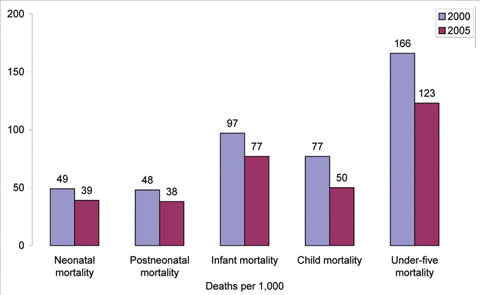4.2.2 Epidemiological diagnosis
Epidemiological diagnosis will help you to determine the specific health issues that affect the people in your community. The focus of this phase is to identify both the health problems and the non-health factors which are associated with a poor quality of life. Describing these health problems can help establish a relationship between health problems and the quality of life. It can also lead to the setting of priorities which will guide your health education programmes and show you how to best use your resources.
Examples of epidemiological data include mortality and morbidity statistics (see Figure 4.2) and the prevalence and incidence of diseases.

An example would be that in your community the specific health problems that have resulted in poor quality of life. These may be malaria, HIV/AIDS, TB, malnutrition and others. At this phase you will identify which ones are the most important ones.
4.2.1 Social diagnosis
